The key to absorbing this post, following my last two, is to appreciate that the Standard Model ‘particles’/fields can be interpreted as low-lying Kaluza-Klein excitations of Randall-Sundrum bulk fields (see header photo). To carry out a Horava-Witten decomposition, flesh out the bulk-field as
![]()
with ![]() satisfying
satisfying
![Rendered by QuickLaTeX.com \[\int\limits_{ - 1\pi }^\pi {d\phi {e^{ - 2\sigma (\phi )}}} {y_n}\left( \phi \right){y_m}\left( \phi \right) = {\delta _{nm}}\]](https://www.georgeshiber.com/wp-content/ql-cache/quicklatex.com-05241460a479379ddfd3c4bfd58f71c6_l3.png)
and the action is then given by
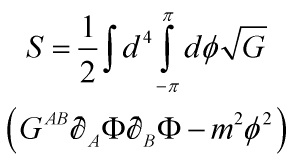
Eq. 1
After an integration by parts and substituting-in ![]() , Eq. 1 reduces to
, Eq. 1 reduces to
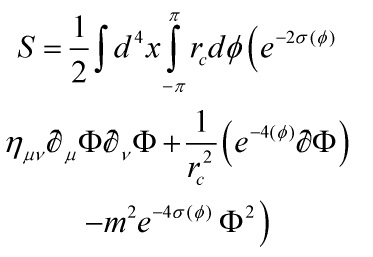
Eq. 2
Now, as in typical Kaluza-Klein compactifications, the bulk field ![]() manifests itself to a four-dimensional ‘observer’ as an infinite tower of scalars
manifests itself to a four-dimensional ‘observer’ as an infinite tower of scalars ![]() with masses
with masses ![]() . After changing variables to
. After changing variables to
![]()
we get
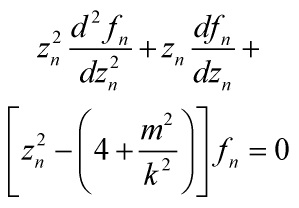
Eq. 3
Bessel functions of order
![]()
give the standard Bertotti-Robinson-solutions. Hence, we have
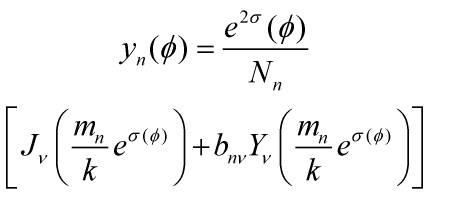
Eq. 4
with ![]() a normalization factor. That the differential operator on the LHS of
a normalization factor. That the differential operator on the LHS of
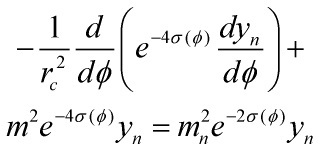
Eq. 5
is self-adjoint means that the derivative of ![]() is continuous at the orbifold fixed points, and that gives us two relations that can solve for
is continuous at the orbifold fixed points, and that gives us two relations that can solve for ![]() and
and ![]() , yielding
, yielding
![]()
Now let
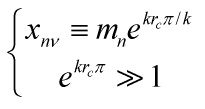
Cnd. 1
and so we have
![]()
The exponential suppression can be understood from Eq. 4 above: the modes ![]() are larger near the 3-brane at
are larger near the 3-brane at ![]() , therefore we can expect to find the Kaluza-Klein excitations in that region and their masses behave exactly in the same way as masses of fields confined to the brane at
, therefore we can expect to find the Kaluza-Klein excitations in that region and their masses behave exactly in the same way as masses of fields confined to the brane at ![]() . For the massless case, m = 0, there is a mode with
. For the massless case, m = 0, there is a mode with ![]() constant and
constant and ![]() and can be obtained from Eq. 4 and Eq. 5 above. For
and can be obtained from Eq. 4 and Eq. 5 above. For ![]() small, we get
small, we get
![]()
Without loss of generality or substance, I will assume ![]() is of order unity, yielding us
is of order unity, yielding us
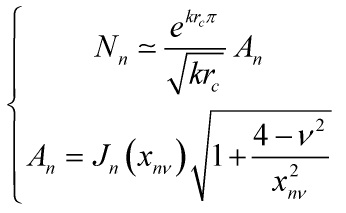
Cnd. 2
Four-dimensionally, these induce couplings between the Kaluza-Klein modes and so the exponential factor in
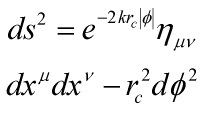
Eq. 6
where ![]() are Lorentz coordinates on the four-dimensional surfaces of constant
are Lorentz coordinates on the four-dimensional surfaces of constant ![]() , plays an essential role in determining the effective scale of the couplings. If the Planck scale sets the scale of the five-dimensional couplings, the low-lying Kaluza-Klein modes will have TeV-range self-interactions!
, plays an essential role in determining the effective scale of the couplings. If the Planck scale sets the scale of the five-dimensional couplings, the low-lying Kaluza-Klein modes will have TeV-range self-interactions!
Start with the term-action
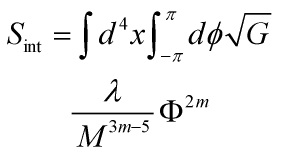
Eq. 7
where ![]() is of order unity. Then, mode expansion gives us the self-interactions of the light Kaluza-Klein states
is of order unity. Then, mode expansion gives us the self-interactions of the light Kaluza-Klein states
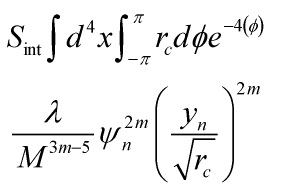
Eq. 8
Thus, the effective 4-D coupling constants for the ![]() interactions are
interactions are
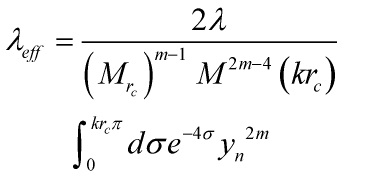
Eq. 9
By Horava-Witten bulk-term derivation, Eq. 7 and Eq. 8 become, respectively, Eq. 10 and 11:
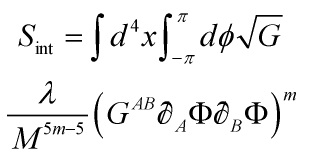
Eq. 10
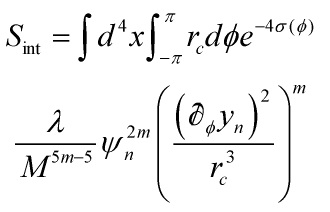
Eq. 11
So, from a 4-D ‘observers-perspective’, we get a ![]() interaction with a coupling constant
interaction with a coupling constant
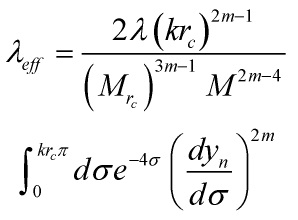
Eq. 12
and for ‘large’ ![]() , it reduces to
, it reduces to
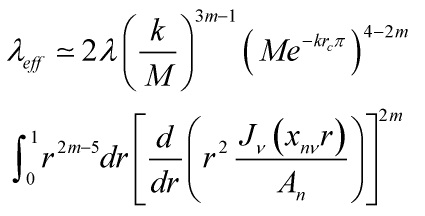
Eq. 13
And the philosophically deep point is that in both cases, the scale relevant to four-dimensional physics is not ![]() , but
, but
![]()
- Thus in the Randall-Sundrum compactification model, bulk scalars acquire low lying Kaluza-Klein modes with four-dimensional masses of order the weak scale and four-dimensional non-renormalizable interactions that are suppressed by powers of the weak scale even though from a five-dimensional brane-perspective their masses and interactions are characterized by the Planck scale, and thus establishes the points of my last three posts relating brane-based cosmology, the Randall–Sundrum model and Klebanov-Strassler warped space-time geometry.


